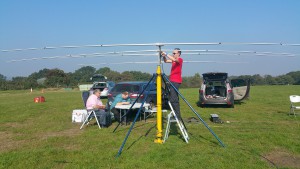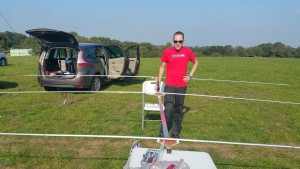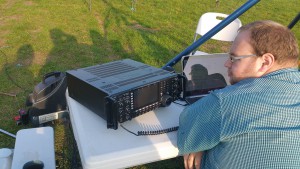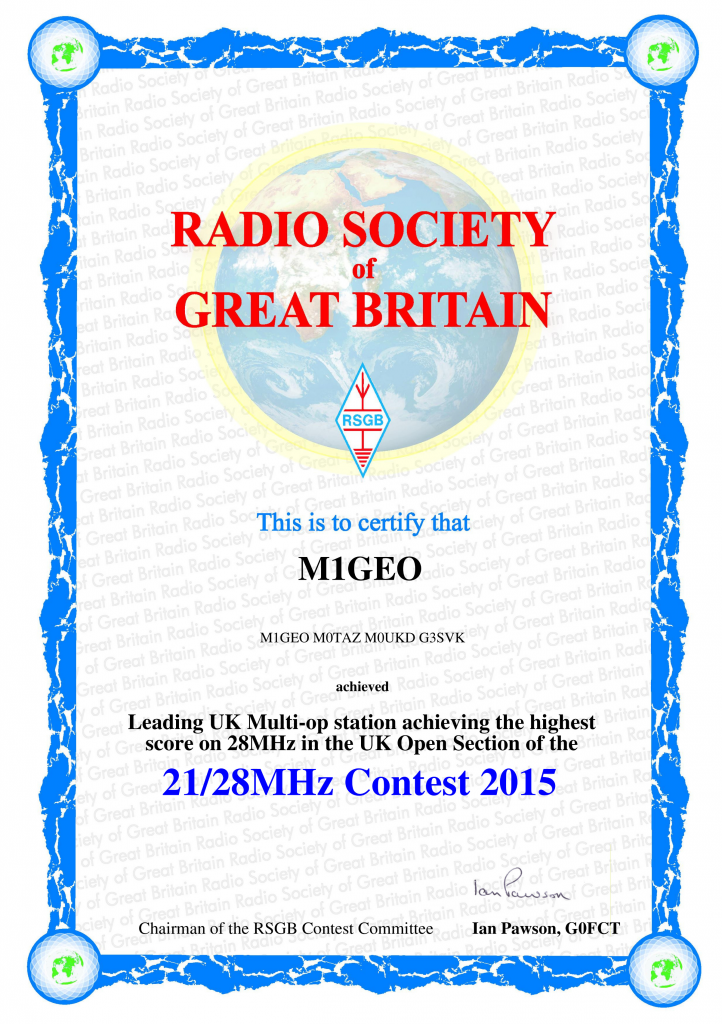The RSGB contest provided an ideal opportunity to focus activity on the higher HF bands. Previous John M0UKD and I had built beams for 28 MHz 3e beam and 21 MHz 4e beam using the design on DK7ZB website. 28 MHz is a compact design using a 3m boom, and 21 MHz is somewhat bigger at 5m boom.
The Racal PU12 mast was used for the 28 MHz antenna and Clark 10 for the 21 MHz antenna. Power was provided by the Honda 2KW silent generator and the radio was provided by George M1GEO the Icom 7700 delivering 200w RF.
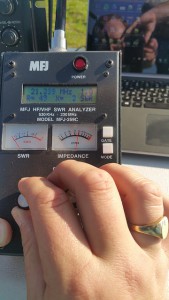 The operating was alfresco as the October weather was sunny and warm. The shack table was positioned close to the mast ready for armstrong rotation The Clark mast was modelling some new blue legs, recently fabricated by Brian 2E0FHU. They worked perfectly and once assembled they provided a sturdy base.
The operating was alfresco as the October weather was sunny and warm. The shack table was positioned close to the mast ready for armstrong rotation The Clark mast was modelling some new blue legs, recently fabricated by Brian 2E0FHU. They worked perfectly and once assembled they provided a sturdy base.
A quick check with the MFJ analyser confirmed the antenna was spot on resonance, and so the CQ calling could commence.
Despite a valiant effort on both 21 and 28 MHz conditions did not support the number of QSO we had hopped, in fact you could say it was a challenge to work anyone at times. QSO could be hard to tease out, and we decided the best method was to work anyone we could hear. Some big DX did arrive, as we managed to work ZS6AI, ZS5DCF, CX8DS, VP8NO and PS8BR to name a few. The bands did seem to be open, at one stage we listened to a CW beacon in South America that was very loud (apparently 10w).
Despite the lack of activity or poor band conditions we enjoyed our time operating outdoors in the sunshine.
Both homebrew beams worked well, and this may well be the last time we operate outdoors in 2015.
Further picture from the day are available online.
Thanks to everyone we worked 73 Dave M0TAZ, George M1GEO and John M0UKD
EDIT (30 November 2015)
The RSGB results come through today, and we were pleased to have won the Powditch Trophy for the Leading UK Multi-Op station achieving the highest score on 28MHz. With the help of the team, M0TAZ M0UKD and G3SVK (G8OCV in support).
